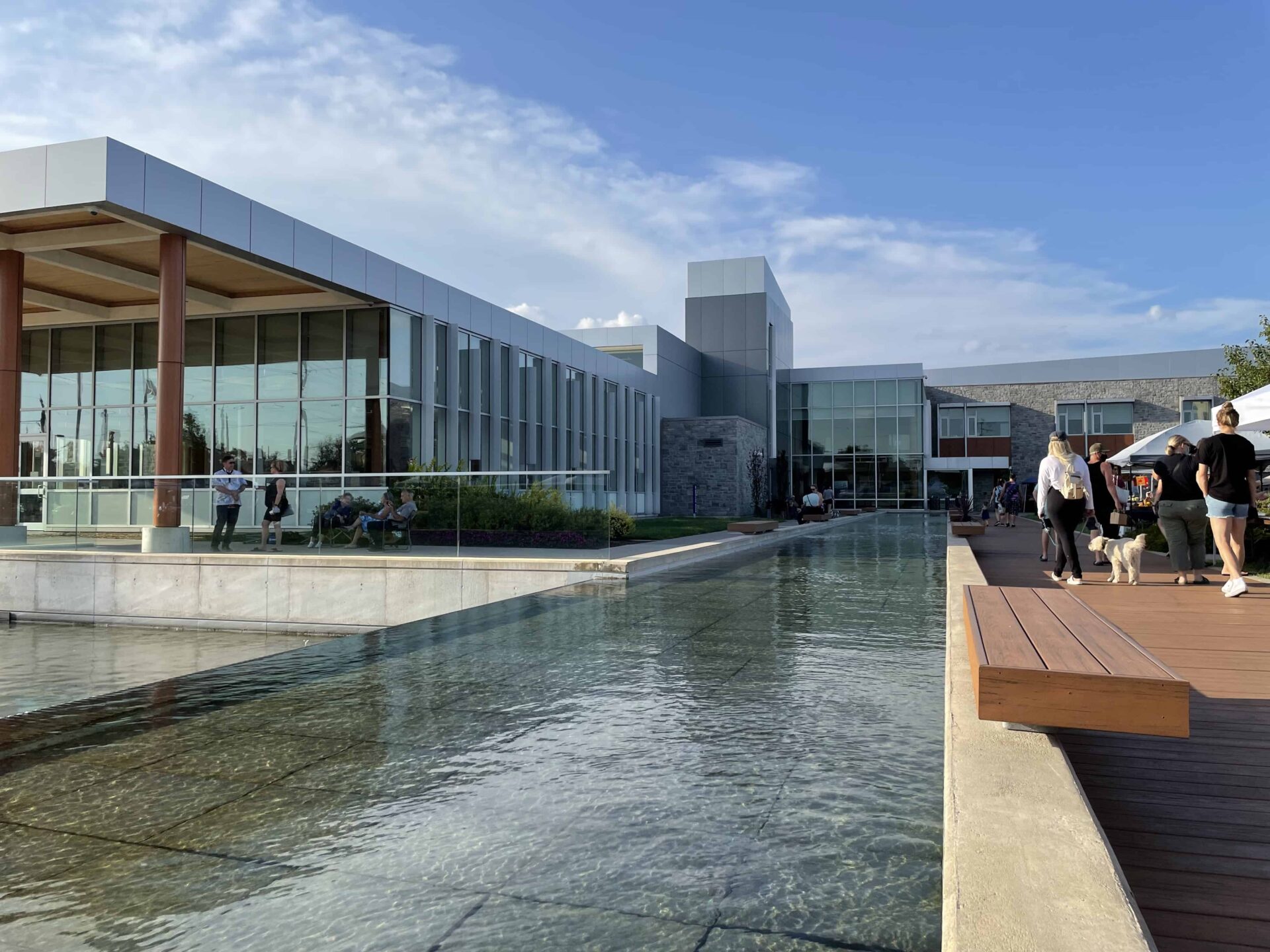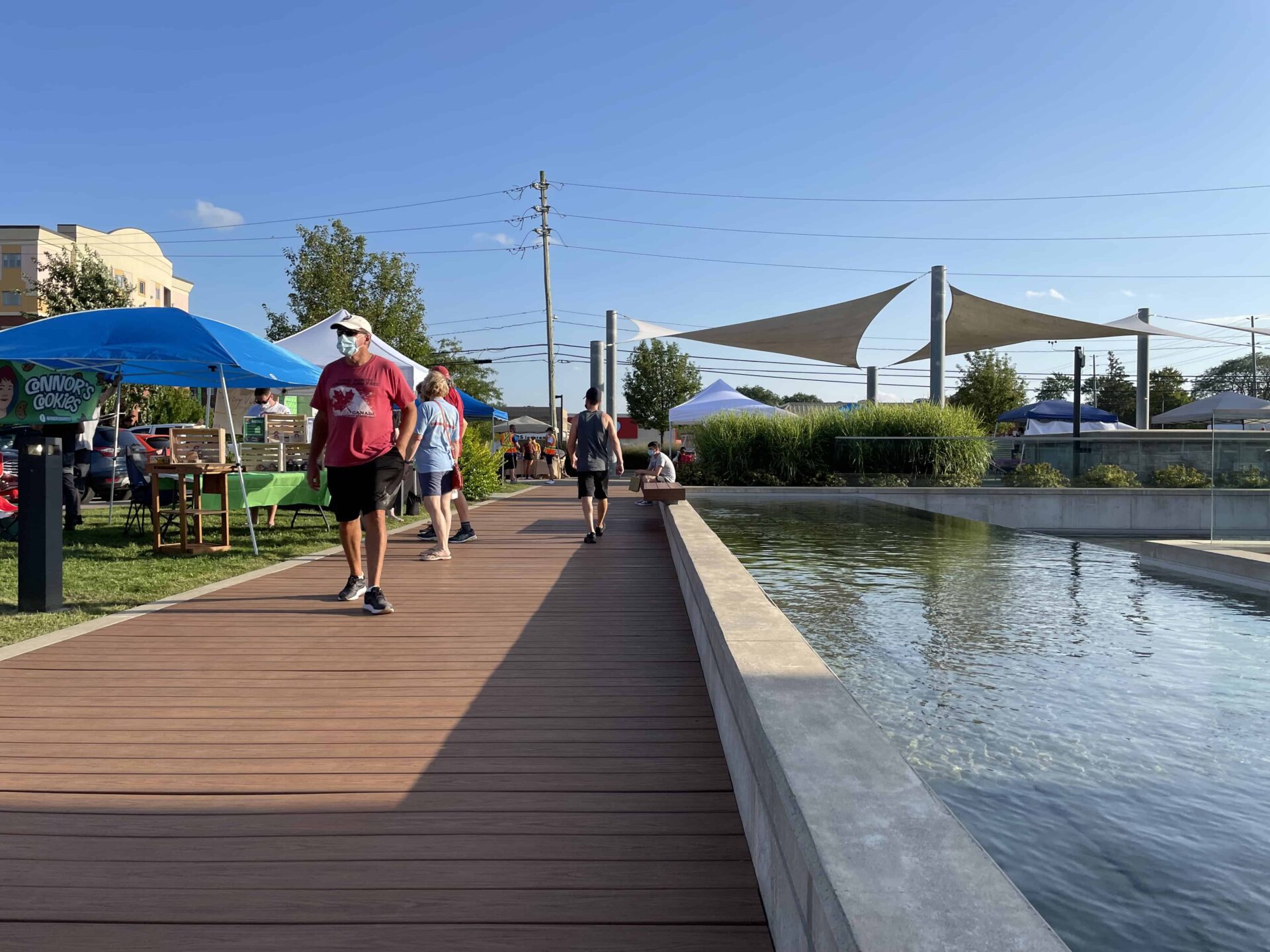Town of LaSalle Cenotaph Park
Project Info
- Cenotaph Park
- Town of LaSalle
- LaSalle, Ontario
Project Description
Established in 2014, Cenotaph Park is envisioned as a space for passive enjoyment and contemplation. Designed with indigenous vegetation running in bands from west to east, its organizing system is analogous to the French ribbon farms which once lined the water’s edge in the region. Through the use of stone, wood and water, the Park reflects the character and natural beauty of the town and its ties to the natural surroundings.
The Cenotaph Memorial sits at the convergence of both the east-west promenade and the north-south promenade connecting it to the Civic Centre and to Normandy Street. The original granite Cenotaph has been relocated from its original home in the northwest corner of the property to sit atop a new plinth, embraced by a larger memorial design. The original Cenotaph has been re-imagined: augmented by the addition of a steel plate, a large map of the world and accompanied by stone walls to provide a sense of permanency.
The Memorial is kinetic in nature. The steel plate, a reference to the harshness of war, has a slotted top which shines a beam of light, tracing the sun’s movement across the face of the map. The granite map is both interactive and educational. The earth is depicted with both textured and smooth surfaces – representing land and water respectively. In a unifying gesture, the earth’s land masses are monolithic and are intentionally absent of any delineation of countries or boundaries. Pins mark the locations where Canada’s Armed Forces have been at war, dealt with conflict and/or engaged in peacekeeping missions. The numbers on the pins are referenced to the legend on the right to assist the observer with the context of our military presence globally. The positioning of all aspects of the Memorial is calibrated to the sun. As the sun tracks across the sky, the slotted plate casts a beam of light on the central Europe pins at 11:00 am every November 11, symbolically commemorating Remembrance Day in perpetuity.













